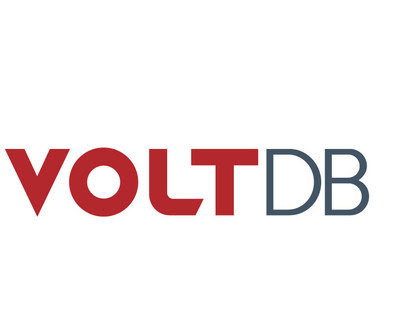Une capacité brevetée permet à la plate-forme de données VoltDB de répliquer les données dans plus de trois centres de données à la fois tout en atténuant les conflits de données
BEDFORD, Massachussets, 31 août 2021/PRNewswire/ — En réponse directe aux besoins de ses principaux clients, travaillant avec certains des plus grands opérateurs télécoms du marché, VoltDB, la principale plate-forme de données de niveau entreprise construite pour permettre une prise de décision rapide en matière de données, a annoncé aujourd’hui l’introduction de sa réplication croisée de centres de données (XDCR) Active(N)tm Loseless. Active(N) Lossless XDCR donnera aux opérateurs de télécommunications et aux entreprises qui cherchent à mettre en place des cas d’utilisation de la 5G un avantage considérable en augmentant la résilience de leurs réseaux contre les pannes et les risques de sécurité, ainsi qu’en ajoutant une protection supplémentaire contre la perte de données.

Active(N) Lossless XDCR réplique les données en temps réel dans quatre centres de données ou plus à la fois, ce qui permet d’obtenir une disponibilité « cinq neuf » (c’est-à-dire 99,999 %), qui devient rapidement indispensable à l’ère de la 5G.
« Nous venons d’élever la barre en matière de cohérence, de résilience et d’évolutivité des données », déclare Dheeraj Remella, directeur des produits chez VoltDB. « Nous pouvons maintenant offrir un niveau de réplication de centre de données qu’aucune autre plate-forme de données ne peut offrir, et cela permet vraiment aux entreprises d’avoir une disponibilité et une résilience infaillibles intégrées à leur architecture afin qu’elles puissent augmenter considérablement leur succès dans la monétisation de la 5G. »
La promesse de latence ultra-faible de la 5G crée de nouveaux cas d’utilisation qui obligent les données à être à la fois immédiatement disponibles et cohérentes, quelle que soit la localisation de l’utilisateur. Ce nouveau paradigme conduit inévitablement à des conflits de données. La solution XDCR unique de VoltDB offrira aux opérateurs de télécommunications et aux entreprises la possibilité unique de résoudre les conflits à la fois au niveau de l’application et de la base de données, afin de maintenir la résilience et la cohérence des données, même à des latences inférieures à 10 millisecondes et quel que soit l’endroit où les données sont stockées, dans un seul ou plusieurs centres de données
« N’importe qui peut effectuer des transactions rapidement », a déclaré Remella. « Nous donnons à nos clients les moyens de les faire rapidement tout en observant puis en corrigeant les inévitables conflits qui surviennent lorsque le même enregistrement est modifié dans plusieurs centres de données en même temps. Cela place les opérateurs de télécommunications et les entreprises qui utilisent VoltDB dans une position unique pour fournir une protection sans précédent contre les défaillances des centres de données et les cyber-attaques, tout en fournissant un accès aux données incroyablement rapide pour leurs applications distribuées dans le monde entier, y compris les applications critiques. »
Avec Active(N) Lossless XDCR, VoltDB enrichit sa plate-forme de données de niveau entreprise avec une fonctionnalité sans précédent pour aider les clients à se différencier dans la feuille de route vers l’automatisation et la transformation numérique et à construire des réseaux robustes qui permettent un déploiement et une monétisation plus rapides des cas d’utilisation de la 5G.
Pour plus d’informations sur VoltDB, rendez-vous sur le site www.voltdb.com/why-voltdb/
À propos de VoltDB
VoltDB permet aux applications d’entreprise d’ingérer, de traiter et d’agir sur les données en quelques millisecondes pour exploiter de nouvelles sources de revenus et prévenir les pertes de revenus. Possédant d’importants clients dans les télécommunications, la finance, les jeux et bien d’autres secteurs verticaux, la plate-forme de données VoltDB est idéalement positionnée pour être la technologie de référence de toute entreprise cherchant à tirer pleinement parti de la 5G, de l’IoT et de tout ce qui suivra.
Logo : https://mma.prnewswire.com/
